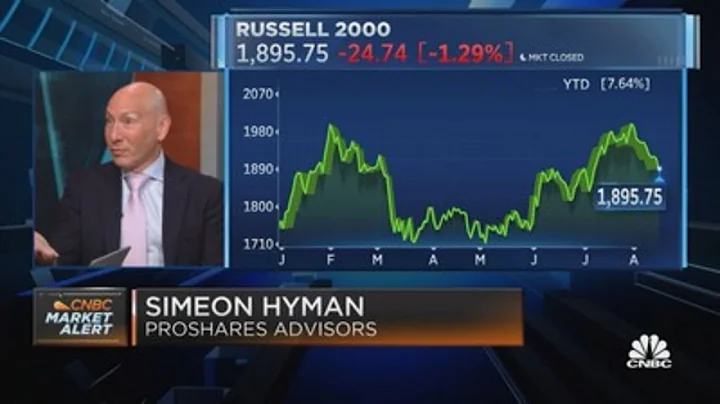Unleash Your Creativity with Angel Vintage Character Design Challenge
Table of Contents
- Introduction
- Prompt and Inspiration
- Choice of Era and Theme
- Personal Connection to the Time Period
- Character Design and Aesthetics
- Significance of the Angelic Symbolism
- Representation and Cultural Identity
- Importance of Women in the Workforce
- References and Resources Used
- Conclusion
Introduction
In this article, we will explore the process and inspiration behind a character design challenge focused on creating a vintage angel illustration. The artist shares their personal connection to the chosen time period, their design choices, and the symbolism behind the character. We will also discuss the representation of diverse cultural identities and the significance of women in the workforce.
Prompt and Inspiration
The artist begins by explaining the character design challenge prompt, which was to create a vintage angel illustration. They mention experiencing some difficulty in finding the right prompt initially but ultimately decided to explore the theme of a late 1940s woman entering the workforce. The inspiration for this prompt comes from the artist's personal connection to their great-grandmother, who was a member of the Women's Army Corps (WAC) during that time period.
Choice of Era and Theme
The artist shares their affinity for the late 1940s as a time period of women breaking barriers and entering the workforce. They draw parallels to the iconic image of Rosie the Riveter, symbolizing the strength and determination of women during that era. The theme of a woman entering the workforce resonates with the artist due to their great-grandmother's involvement in the WAC.
Personal Connection to the Time Period
The artist expresses a deep personal connection to the late 1940s time period. They signify their admiration for the women of that era who defied societal norms and contributed significantly to the country's development. The artist acknowledges that women have always been resilient and capable but believes that the 1940s marked a shift in acknowledging their value and granting them opportunities previously denied.
Character Design and Aesthetics
The artist explains their design choices for the vintage angel character, starting with the pose and expression. They wanted to capture a sense of confidence and determination, reminiscent of the Rosie the Riveter image. The artist also describes the aesthetic appeal of the hairstyle and the simplicity yet elegance of the clothing style of that time. They find joy in drawing the wrinkles on the outfit, considering it therapeutic.
Significance of the Angelic Symbolism
The artist discusses the inclusion of angelic symbolism in the character design, particularly the halo and unique wing design. They express their admiration for a specific wing type they discovered in a mobile game and their preference for its elegance and aesthetic appeal. The artist emphasizes that practicality takes a backseat to aesthetics in this illustration as the character is meant to embody an ethereal and angelic presence.
Representation and Cultural Identity
The artist mentions intentionally portraying the character as Latina to acknowledge the contribution of women of color in the workforce. They believe that while the late 1940s saw a significant number of women entering the workforce, today, it remains primarily inhabited by women of color. By representing the character as Latina, the artist aims to honor and elevate the stories and experiences of women in challenging and dangerous jobs.
Importance of Women in the Workforce
The artist highlights the importance of women in the workforce, both in the 1940s and in contemporary times. They recognize the progress that has been made in terms of gender equality but also acknowledge that there is still work to be done. The artist emphasizes the need to continue uplifting women and advocating for fair compensation and equal opportunities.
References and Resources Used
The artist shares their approach to using reference photos for character design challenges. They recommend utilizing both Google and Pinterest for different purposes. Google provides straightforward and anatomically correct reference photos, while Pinterest offers a more artistic and aesthetic range of images that can help set the tone for a picture.
Conclusion
In conclusion, the artist expresses their satisfaction with the final character illustration and the overall experience of the design challenge. They encourage others to try character design challenges as a means of personal growth and learning. The artist reiterates the importance of representation, recognition, and support for women in the workforce, honoring the contributions of women from the past and present.
Article
Introduction
Have you ever wondered what goes into the creation of a character design challenge? In this article, we will delve into the intricate process and inspiration behind a recent vintage angel illustration. Join us on this journey as we explore the artist's personal connection to the chosen era, their design choices, and the symbolism behind the character. Get ready to be captivated by the aesthetics and uncover the significance of women in the workforce.
Prompt and Inspiration: Unveiling the Challenge
Every creative endeavor starts with a spark of inspiration. The artist behind this illustration reveals the character design challenge prompt – creating a vintage angel. Initially faced with the challenge of finding the right prompt, the artist's mind swiftly gravitated towards the late 1940s era. However, why did this era resonate so profoundly?
Choice of Era and Theme: Embracing the Past
The artist pens their fascination for the late 1940s, a time when women were breaking barriers and entering the workforce in unprecedented numbers. The iconic image of Rosie the Riveter stands as a symbol of strength and determination, emblematic of women during that era. This theme of women entering the workforce holds personal significance for the artist, as it evokes memories of their great-grandmother's involvement in the Women's Army Corps (WAC).
Personal Connection to the Time Period: A Tale of Resilience
For the artist, the late 1940s represents not only a significant time in history but also a period deeply intertwined with their own family narrative. The artist reveres the women of that era, recognizing their courage and resilience in the face of societal norms. Women had always been formidable, but the 1940s marked a turning point where their contributions to the workforce were finally acknowledged and valued.
Character Design and Aesthetics: Crafting the Vintage Angel
Let's delve into the heart of the illustration – the character design. The artist unveils their thought process behind capturing the essence of a vintage angel. They visualize a pose exuding confidence and determination, drawing inspiration from the iconic Rosie the Riveter image. The artist joyfully explores the intricate hairstyle and finds solace in the simplicity yet elegance of the 1940s clothing style.
Bold wrinkle lines on the outfit become therapeutic as the artist meticulously brings the character to life. From hair to clothing, every detail contributes to the character's authenticity and visual allure. But why stop there? Let's explore the angelic elements that embrace the illustration with an ethereal touch.
Significance of the Angelic Symbolism: Halo and Wings
In this vintage angel illustration, the artist incorporates two key angelic symbols – the halo and wings. The halo crowning the character's head serves as a heavenly emblem, augmenting the celestial aura surrounding her. However, it is the unique wing design that truly captivates attention.
Inspired by a mobile game, the artist stumbled upon a captivating wing style that blended elegance and coolness flawlessly. These gently downturned wings, although lacking a formal name, enchanted the artist with their graceful appearance. Functionality may take a backseat to aesthetics in this illustration, but the wing design perfectly embodies the ethereal nature of the character.
Representation and Cultural Identity: Rising Above Barriers
Diversity and representation are paramount in our modern world. With this in mind, the artist intentionally portrays the vintage angel as Latina. The choice stems from the recognition that while the 1940s witnessed a surge of women entering the workforce, today, it predominantly comprises women of color. By infusing the character with a Latina identity, the artist aims to honor and elevate the stories and experiences of women in challenging and sometimes perilous professions.
Importance of Women in the Workforce: A Continuing Journey
The impact of women in the workforce cannot be underestimated. The artist highlights the remarkable progress that has been made in terms of gender equality. However, they remind us that there is still work to be done. As we strive for a fair and just society, it is essential to uplift women, advocate for fair compensation, and create equal opportunities for all. The vintage angel serves as a reminder of the indomitable spirit that continues to propel women forward.
References and Resources Used: The Power of Research
Behind every stunning illustration lies a treasure trove of references and resources. The artist shares their approach to seeking inspiration and reference material. They emphasize the benefits of using both Google and Pinterest. While Google provides straightforward and anatomically correct reference photos, Pinterest expands the horizons by offering a diverse range of images, setting the aesthetic tone for a composition. The artist's combination of both resources contributes to their unique and captivating style.
Conclusion: A Divine Creation
In conclusion, the artist expresses their profound satisfaction with the vintage angel illustration. The simplicity and elegance of the design allow the character to radiate a sense of innocence and purity. They encourage others to embark on their own character design challenges, as each endeavor brings newfound personal growth and knowledge. Finally, the artist leaves us with a resounding call to recognize and support women in the workforce, honoring their contributions with gratitude and admiration.
Highlights:
- Immerse yourself in the world of a vintage angel illustration, inspired by the late 1940s era.
- Discover the personal connection and significance behind the choice of the time period.
- Unveil the thought process behind character design and the captivating aesthetics of the vintage angel.
- Explore the symbolism of angelic elements such as halos and wings in the illustration.
- Embrace diversity and cultural representation as the artist portrays the character with a Latina identity.
- Recognize the importance of women in the workforce and the ongoing journey towards equality.
- Uncover the power of reference photos and resources in the creation of captivating illustrations.
- Be inspired to embark on your own character design challenges and experience personal growth.
- Reflect on the resilience and determination of women throughout history and their invaluable contributions.
- Acknowledge the continuous need to uplift and support women in the workforce, advocating for fair compensation and equal opportunities.
FAQ
Q: What was the inspiration behind the vintage angel illustration?
A: The artist was prompted to create a vintage angel illustration and found inspiration in the late 1940s era, particularly the significance of women entering the workforce during that time.
Q: Why did the artist choose to portray the vintage angel as Latina?
A: The artist intentionally portrayed the character as Latina to honor and elevate the stories and experiences of women of color in challenging and dangerous jobs in the present day.
Q: How did the artist incorporate angelic symbolism into the illustration?
A: The artist included a halo and unique downturned wings to symbolize the character's angelic nature and ethereal presence.
Q: What resources did the artist use for reference photos?
A: The artist recommended using both Google and Pinterest for different purposes. Google provides anatomically correct reference photos, while Pinterest offers a wide range of artistic and aesthetic images to set the tone for a composition.
Q: What message does the vintage angel illustration convey?
A: The illustration serves as a reminder of the indomitable spirit and resilience of women, highlighting the importance of recognizing and supporting women in the workforce.
 WHY YOU SHOULD CHOOSE SaasVideoReviews
WHY YOU SHOULD CHOOSE SaasVideoReviews







